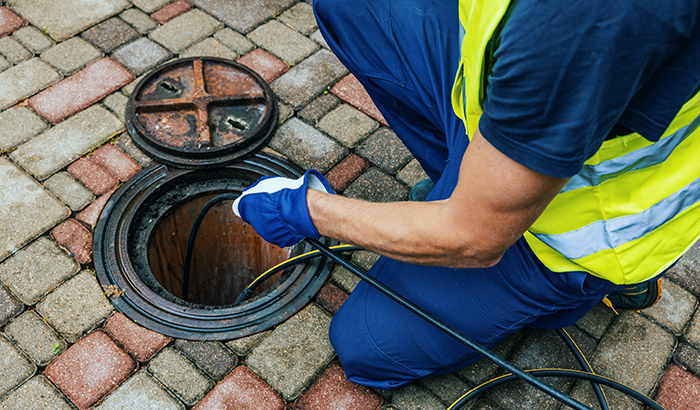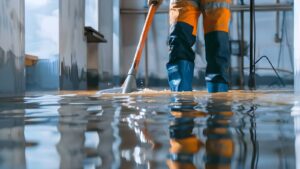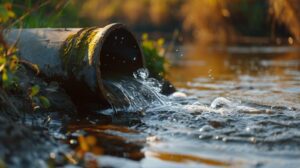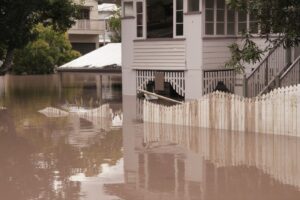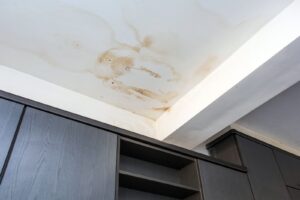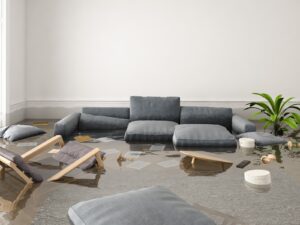Backed-up drains from sewage damage can be a financial pain and health hazard. Many sewage nightmares don’t just appear without warning. Most of the time, there are signs of disaster lurking around the corner; you just need to know what those signs are!
Some indicators that will help you know if you are at risk of sewage damage are:
- If you have old plumbing.
- When you haven’t had your sewer line checked in a while.
- If there are many trees around your home.
- When you flush non-flushable things down the drain.
- If you smell something strange.
- When most or all of your drains drain slowly.
- If your drains are constantly backing up or getting clogged.
- When part of your lawn becomes inexplicably more lush or swampy.
- If your plumbing has an odd setup.
Preventing sewage damage and the need for water damage restoration is as simple as looking in for these notable symptoms of plumbing problems. Here’s what you need to know about each point.
Dealing With Old Plumbing
One of the reasons you need to have the plumbing in your home regularly replaced is because the water we use carries a lot of minerals with it. Although it is safe to drink and use hard water, the minerals carried in hard water can cling to the sides of your pipes, slowly clogging them over time.
If you’re unsure if your pipes have mineral buildup like this, there are some things you can check that might give you an indication of what the inside of your pipes looks like.
If your home uses copper or cast iron pipes, there is a good chance that they were installed a long time ago. Most homes use PVC piping, and many builders and plumbers are transitioning to PEX pipes. Cast iron pipes have long been phased out of traditional usage, and copper is on its way out.
You don’t want hard water or waste building up along the sides of your sewer line. The constriction that buildup would make on your water flow would put your home at risk of sewage damage.
Check Your Sewers
A quick and easy way to scope out the state of your sewer is to get a camera inspection. Using a special camera system, a plumber can quickly look at the state of your sewer lines from the inside. If there is an obstruction or break, they will be able to see it clearly.
Many sewage problems can be discovered through a quick camera inspection. If you have any doubt about the state of your sewer lines, getting a camera inspection is just the right thing to give you peace of mind!
Be Aware of Tree Roots!
Trees and plants love water, and what does your sewer system channel? It channels water.
If there is any crack or a loose seal in your sewer line, it will draw plant roots like a moth is drawn to a light. Plants’ roots are powerful agents of destruction. Once they detect water, they can infiltrate your sewer line, widen the cracks, and clog up the way, keeping things from draining.
Problems with tree roots can’t be addressed with chemicals. In most cases, you’ll likely need your line hydro-jetted and fixed.
Watch What You Flush
An easy way to create a problem that causes sewage damage is by flushing anything besides waste and toilet paper down your drains. If you are in the habit of flushing paper towels, baby wipes, makeup remover wipes, or similar products down the toilet, you may be creating more problems than you are solving.
Toilets and drains are an easy spot to dispose of things, but if something is not made to be flushed, it can catch and clog in your sewer line. These clogs can cause slow draining throughout your house and may even block your drains completely, backing up your drains into your home.
Investigate Bad Smells
Have you noticed bad smells in your home? Do they all seem to be coming from rooms with drains? You can sometimes smell a backup before it becomes a problem. Flushed waste that doesn’t drain creates a smell that can permeate your house, particularly the lower sections that are closest to the main sewer line.
If you notice a bad smell coming from your drains that don’t clean after a few minutes, contact someone to check out your sewage line, as you may have a clog.
Pay Attention to Slow Drains
When you have an obstruction in your drain, the water and waste you are getting rid of may slow or stop altogether. You may have had similar problems with an isolated sink or toilet. When your sewer line gets clogged, it affects all your plumbing.
If you notice that more than one drain is having difficulty draining, this could be a sign of a widespread problem. However, this will likely only manifest in your lowest drains, as they are the closest to the main sewer line.
If you notice slow drains, you should get some help before you need water damage restoration.
Frequent Clogging Problems
Are you having trouble with a toilet that seems to be frequently clogged? It may not be the toilet that’s clogging, but the pipes down the line. Check the shower or tub drains on your bottommost floor when you flush your toilet. If those drains have backflow when you flush your toilet, you probably have a backed-up sewer line.
Check the Yard
Check your yard for abnormalities. Some sewer leaks can go undetected for a long time, allowing breaks to grow more pronounced until they become completely clogged. If you notice part of your yard is uncharacteristically green or is turning swampy, this could be an indication your sewer line is damaged.
If sewage is seeping into your yard, it poses as a biohazard to you and those who live with you. While this may not seem to be an immediate problem, allowing this damage to remain can increase your chances of infection from waste material and cause trouble if larger plants choose to use your sewer as a water source.
Address Bad and Weird Plumbing
There are plumbing setups that may lead to problems with sewage damage. Setups that allow your sump pump and gutters to drain into your sewage may lead to clogging. Having too many sharp turns in your sewer line can increase the likelihood of blockages. Also, poorly sealed pipes may burst and drench your home with sewage.
Total Flood and Fire Restoration
Accidents happen. It is a simple fact of life. If you weren’t able to fix a plumbing problem before it escalated into sewage damage, don’t be too hard on yourself.
We are trained professionals who know how to handle water damage restoration. Sewage can be hazardous to clean up, which is why we make sure to make your safety our priority.
Contact us today if you have experienced sewage damage.

